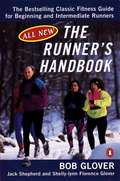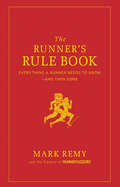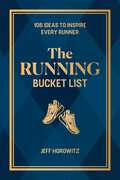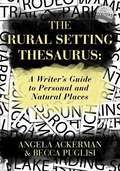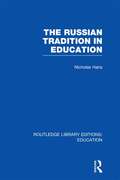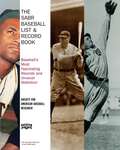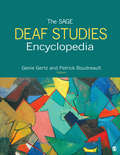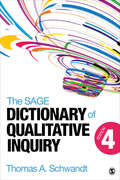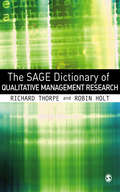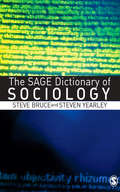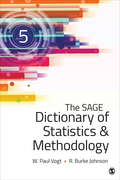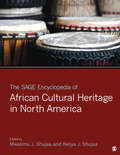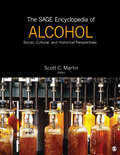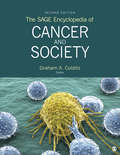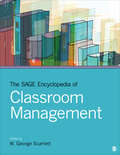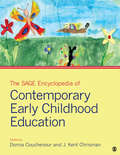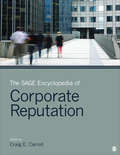- Table View
- List View
The Runner's Handbook
by Shelly-Lynn Florence Glover Bob Glover Jack ShepherdIf you're a runner, or would like to be one, The Runner's Handbook will answer all your questions. Fitness expert Bob Glover-who has trained thousands of runners-shows you how to devise a training program and keep at the top of your form.
The Runner's Rule Book: Everything a Runner Needs to Know--And Then Some (Runner's World)
by Editors of Runner's World Mark RemyEvery sport has rules. Running is no exception. If you're curious, just visit the Web site of USA Track & Field, the sport's governing body, where you'll find detailed dictates on everything from disqualification to bib-number placement to the caliber of the starter's pistol.But what about the everyday rules of running? The unspoken ones that pertain to the lingo, behavior, and etiquette that every seasoned runner seems to know and every newbie needs to learn? Veteran runner Mark Remy and the editors of Runner's World magazine provide answers to these very questions and many more in The Runner's Rule Book.With 100+ rules that cover the basics of running, racing, track etiquette, and apparel and gear, including hilarious running commentary on running culture, The Runner's Rule Book will be the reference guide you'll turn to again and again for answers to your burning running questions.
The Running Bucket List: 106 Ideas to Inspire Every Runner
by Jeff HorowitzTransform your running routine with more than 100 bucket list ideas that will encourage you to try everything from little-known races and international competitions to new training techniques and travel destinations.There are a lot of reasons to run. We do it to lose or maintain weight, to be healthier, and to clear our minds. Running can do all these things, and more. But running can be, well, repetitive. For everyone, at some point, it can get boring. Predictable. Routine. Experienced runner, coach, and adventurer Jeff Horowitz wrote The Running Bucket List to provide a fun and organized way to reinvigorate your love for running. Pulling from his nearly four decades of running, which includes racing in every state in the US and on every continent, running in everything from the world's biggest races to solo runs in almost every kind of condition imaginable, Horowitz offers ideas to spice up your training and events that you might already be familiar with, as well as others that you&’ve never dreamed of before. Check items off your running bucket list like: Join a running club Get a gait analysis Participate in your local Turkey Trot Race in the Two Oceans Marathon in South Africa Run on the Roger Bannister Track in Oxford, England Become a race volunteer And so much more In this book, you&’ll find over 100 bucket list items, ranging from the sublime to the ridiculous, from the deeply challenging to the whimsical. Pick and choose from among these adventures or work your way through the list one by one. Either way, you can be sure to banish boredom from your running.
The Rural Setting Thesaurus: A Writer's Guide to Personal and Natural Places
by Angela Ackerman Becca PuglisiWithin the pages of a book exists a world drawn from a writer’s deepest imaginings, one that has the ability to pull readers in on a visceral level. But the audience’s fascination will only last if the writer can describe this vibrant realm and its inhabitants well. The setting achieves this by offering readers a unique sensory experience. So much more than stage dressing, the setting can build mood, convey meaning through symbolism, drive the plot by creating challenges that force the hero to fight for what he wants, and trigger his emotions to reveal his most intimate feelings, fears, and desires.
The Russian Tradition in Education (Routledge Library Editions: Education)
by Nicholas HansThis volume describes the Russian tradition in education and in particular the dominant role of Russian nationality. The whole history of Russian education is covered from Peter the Great to Khruschev.
The Ryder Cup: Golf's Greatest Event
by Tom Clavin Bob BubkaRevised and updated, this in-depth look recounts The Ryder Cup's rich history and venerated place in sports, its champions and its characters, and its status as golf's greatest grudge match. From its humble origins in 1927 to its place today as golf's most gentlemanly battle—and a multi-million-dollar international sports event—The Ryder Cup has cemented its place in both its legacy and lore. Golf journalist Tom Clavin and golf commentator Bob Bubka have now made current their seminal work on the tournament, exploring the history and the rivalries, the extraordinary triumphs and devastating defeats, and the U.S. and the European contingents who have made this contest so remarkable. The names are legendary for any fan of golf: Palmer, Nicklaus, Jacklin, Floyd, Mickelson, Ballesteros, Faldo, Hogan, Nelson, Watson, Strange, Sarazen, Crenshaw, Woods, Montgomerie…the list goes on, as do their pitched battles for dominance and accomplishments on the greens. This up-close and personal look at The Ryder Cup is a must-read for golf fans, especially in preparation for the landmark 40th Anniversary tournament in Gleneagles, Scotland, in 2014.
The SABR Baseball List & Record Book
by Lisa HochsteinFrom the authority on baseball research and statistics comes a vast and fascinating compendium of unique baseball lists and records. The SABR Baseball List & Record Book is an expansive collection of pitching, hitting, fielding, home run, team, and rookie records not available online or in any other book. This is a treasure trove of baseball history for statistically minded baseball fans that's also packed with intriguing marginalia. For instance, on July 25, 1967, Chicago's Ken Berry ended Game Two of a doubleheader against Cleveland with a home run in the bottom of the sixteenth inning -- Chicago's second game-winning homer of the day. The comprehensive lists include Most Career Home Runs by Two Brothers (Tommie and Hank Aaron have 768), Most Seasons with 15 or More Wins (Cy Young and Greg Maddux each have 18), and Highest On Base Percentage in a Season by a Rookie (listing every rookie above . 400). Unlike other record books that only list the record holders -- say, most RBI by a rookie, held by Ted Williams with 145 -- SABR details every rookie to reach 100 RBI. Other record books might note the last pitcher in each league to steal home; here SABR has included every pitcher to do it. The book also includes a number of idiosyncratic features, such as a rundown of every player who has hit a triple and then stolen home, or every reliever who has won two games in one day. Many of the lists include a comments column for key historical notes and entertaining trivia (Bob Horner hit four home runs in a 1986 game, but his team lost). This is a must-have for every fan's library. Edited by Lyle Spatz, Chairman of the Baseball Records Committee for SABR.
The SAGE Deaf Studies Encyclopedia
by Genie Gertz Dr Patrick BoudreaultThe time has come for a new in-depth encyclopedic collection of articles defining the current state of Deaf Studies at an international level and using the critical and intersectional lens encompassing the field. The emergence of Deaf Studies programs at colleges and universities and the broadened knowledge of social sciences (including but not limited to Deaf History, Deaf Culture, Signed Languages, Deaf Bilingual Education, Deaf Art, and more) have served to expand the activities of research, teaching, analysis, and curriculum development. The field has experienced a major shift due to increasing awareness of Deaf Studies research since the mid-1960s. The field has been further influenced by the Deaf community’s movement, resistance, activism and politics worldwide, as well as the impact of technological advances, such as in communications, with cell phones, computers, and other devices. A major goal of this new encyclopedia is to shift focus away from the “Medical/Pathological Model” that would view Deaf individuals as needing to be “fixed” in order to correct hearing and speaking deficiencies for the sole purpose of assimilating into mainstream society. By contrast, The Deaf Studies Encyclopedia seeks to carve out a new and critical perspective on Deaf Studies with the focus that the Deaf are not a people with a disability to be treated and “cured” medically, but rather, are members of a distinct cultural group with a distinct and vibrant community and way of being.
The SAGE Deaf Studies Encyclopedia
by Genie Gertz Dr Patrick BoudreaultThe time has come for a new in-depth encyclopedic collection of articles defining the current state of Deaf Studies at an international level and using the critical and intersectional lens encompassing the field. The emergence of Deaf Studies programs at colleges and universities and the broadened knowledge of social sciences (including but not limited to Deaf History, Deaf Culture, Signed Languages, Deaf Bilingual Education, Deaf Art, and more) have served to expand the activities of research, teaching, analysis, and curriculum development. The field has experienced a major shift due to increasing awareness of Deaf Studies research since the mid-1960s. The field has been further influenced by the Deaf community’s movement, resistance, activism and politics worldwide, as well as the impact of technological advances, such as in communications, with cell phones, computers, and other devices. A major goal of this new encyclopedia is to shift focus away from the “Medical/Pathological Model” that would view Deaf individuals as needing to be “fixed” in order to correct hearing and speaking deficiencies for the sole purpose of assimilating into mainstream society. By contrast, The Deaf Studies Encyclopedia seeks to carve out a new and critical perspective on Deaf Studies with the focus that the Deaf are not a people with a disability to be treated and “cured” medically, but rather, are members of a distinct cultural group with a distinct and vibrant community and way of being.
The SAGE Dictionary of Qualitative Inquiry (Fourth Edition)
by Thomas A. SchwandtIn this Fourth Edition of The SAGE Dictionary of Qualitative Inquiry Thomas A. Schwandt provides a guide to the terms and phrases that help shape the origins, purpose, logic, meaning, and methods of the practices known as qualitative inquiry. This edition features 20 additional terms as well as a restructured Reader’s Guide. Key references have been updated and select terms and phrases from previous editions have been reorganized and greatly expanded. Together, the dictionary entries provide a guide to the methodological and epistemological concepts and theoretical orientations of qualitative inquiry. This one-of-a-kind resource is ideal for readers who are navigating various perspectives on qualitative inquiry, working on a qualitative dissertation, or are launching their own investigations into the issues covered.
The SAGE Dictionary of Qualitative Management Research
by Robin Holt Richard Thorpe'This comprehensive work extends general ideas, concepts, and techniques of qualitative research into the realm of management research...This is a crucial reference tool for anyone conducting research in this field of study' - CHOICE With over 100 entries on key concepts and theorists, the Dictionary of Qualitative Management Research provides full coverage of the field, explaining fundamental concepts and introducing new and unfamiliar terms. This book provides: - Definitions - Examples in the field of management studies - Criticisms and possible future directions Engagingly written by specialists in each area, this dictionary will be the definitive and essential companion to established textbooks and teaching materials in qualitative management research.
The SAGE Dictionary of Sociology
by Steve Bruce Steven Yearley"Undoubtedly the most accessible, readable and downright interesting - even amusing - dictionary of its type. In being all of those things - and more - the dictionary does not sacrifice on quality. There are many well-chosen entries and they are quite informative. A useful addition to any scholar's library while at the same time being an excellent resource for both graduate and undergraduate students" - George Ritzer, University of Maryland "This is a delightful and comprehensive dictionary. The authors write in an engaging and lively style that brings alive the ideas of sociology not only for existing practitioners, but also for a whole new generation of students" - Tim May, University of Salford With over 1000 entries on key concepts and theorists, The SAGE Dictionary of Sociology provides full coverage of the field, clarifying the technical use of apparently common words, explaining the fundamental concepts and introducing new and unfamiliar terms. This book provides: authoritative, reliable definitions accessible 'digests' of key arguments contemporary, appealing illustrations of points readability. This is not just another dry guide to the discipline. Engagingly written with its audience firmly in mind, it will be the definitive and chosen companion to established textbooks and teaching materials in sociology.
The SAGE Dictionary of Statistics & Methodology: A Nontechnical Guide for the Social Sciences
by Robert Burke Johnson W. (William) VogtWritten in a clear, readable style with a wide range of explanations and examples, this must-have dictionary reflects recent changes in the fields of statistics and methodology. Packed with new definitions, terms, and graphics, this invaluable resource is an ideal reference for researchers and professionals in the field and provides everything students need to read and understand a research report, including elementary terms, concepts, methodology, and design definitions, as well as concepts from qualitative research methods and terms from theory and philosophy.
The SAGE Dictionary of Statistics & Methodology: A Nontechnical Guide for the Social Sciences
by Robert Burke Johnson W. (William) VogtWritten in a clear, readable style with a wide range of explanations and examples, this must-have dictionary reflects recent changes in the fields of statistics and methodology. Packed with new definitions, terms, and graphics, this invaluable resource is an ideal reference for researchers and professionals in the field and provides everything students need to read and understand a research report, including elementary terms, concepts, methodology, and design definitions, as well as concepts from qualitative research methods and terms from theory and philosophy.
The SAGE Encyclopedia of African Cultural Heritage in North America
by Mwalimu J. Shujaa Kenya J. ShujaaThe Encyclopedia of African Cultural Heritage in North America provides an accessible ready reference on the retention and continuity of African culture within the United States. Our conceptual framework holds, first, that culture is a form of self-knowledge and knowledge about self in the world as transmitted from one person to another. Second, that African people continuously create their own cultural history as they move through time and space. Third, that African descended people living outside of Africa are also contributors to and participate in the creation of African cultural history. Entries focus on illuminating Africanisms (cultural retentions traceable to an African origin) and cultural continuities (ongoing practices and processes through which African culture continues to be created and formed). Thus, the focus is more culturally specific and less concerned with the broader transatlantic demographic, political and geographic issues that are the focus of similar recent reference works. We also focus less on biographies of individuals and political and economic ties and more on processes and manifestations of African cultural heritage and continuity. FEATURES: A two-volume A-to-Z work, available in a choice of print or electronic formats 350 signed entries, each concluding with Cross-references and Further Readings 150 figures and photos Front matter consisting of an Introduction and a Reader’s Guide organizing entries thematically to more easily guide users to related entries Signed articles concluding with cross-references
The SAGE Encyclopedia of African Cultural Heritage in North America
by Mwalimu J. Shujaa Kenya J. ShujaaThe Encyclopedia of African Cultural Heritage in North America provides an accessible ready reference on the retention and continuity of African culture within the United States. Our conceptual framework holds, first, that culture is a form of self-knowledge and knowledge about self in the world as transmitted from one person to another. Second, that African people continuously create their own cultural history as they move through time and space. Third, that African descended people living outside of Africa are also contributors to and participate in the creation of African cultural history. Entries focus on illuminating Africanisms (cultural retentions traceable to an African origin) and cultural continuities (ongoing practices and processes through which African culture continues to be created and formed). Thus, the focus is more culturally specific and less concerned with the broader transatlantic demographic, political and geographic issues that are the focus of similar recent reference works. We also focus less on biographies of individuals and political and economic ties and more on processes and manifestations of African cultural heritage and continuity. FEATURES: A two-volume A-to-Z work, available in a choice of print or electronic formats 350 signed entries, each concluding with Cross-references and Further Readings 150 figures and photos Front matter consisting of an Introduction and a Reader’s Guide organizing entries thematically to more easily guide users to related entries Signed articles concluding with cross-references
The SAGE Encyclopedia of Alcohol: Social, Cultural, and Historical Perspectives
by Scott C. MartinAlcohol consumption goes to the very roots of nearly all human societies. Different countries and regions have become associated with different sorts of alcohol, for instance, the “beer culture” of Germany, the “wine culture” of France, Japan and saki, Russia and vodka, the Caribbean and rum, or the “moonshine culture” of Appalachia. Wine is used in religious rituals, and toasts are used to seal business deals or to celebrate marriages and state dinners. However, our relation with alcohol is one of love/hate. We also regulate it and tax it, we pass laws about when and where it’s appropriate, we crack down severely on drunk driving, and the United States and other countries tried the failed “Noble Experiment” of Prohibition. While there are many encyclopedias on alcohol, nearly all approach it as a substance of abuse, taking a clinical, medical perspective (alcohol, alcoholism, and treatment). The SAGE Encyclopedia of Alcohol examines the history of alcohol worldwide and goes beyond the historical lens to examine alcohol as a cultural and social phenomenon, as well—both for good and for ill—from the earliest days of humankind.
The SAGE Encyclopedia of Cancer and Society
by Graham A. ColditzThe first edition of the Encyclopedia of Cancer and Society was published in 2007 and received a 2008 Editors’ Choice Award from Booklist. It served as a general, non-technical resource focusing on cancer from the perspective of the social and behavioral sciences, exploring social and economic impacts, the “business” of cancer, advertising of drugs and treatment centers, how behavior change could offer great potential for cancer prevention, environmental risks, food additives and regulation, the relation between race and ethnicity and cancer risk, socioeconomic status, controversies—both scientific and political—in cancer treatment and research, country-by-country entries on cancer around the world, and more. Given various developments in the field including new drug treatments, political controversies over use of the vaccines Gardasil and Cervarix with young girls to prevent cervical cancer, and unexpected upticks in the prevalence of adult smoking within the U.S. following decades of decline, the SAGE Encyclopedia of Cancer and Society, Second Edition serves as an updated and more current encyclopedia that addresses concerns pertaining to this topic. Key Features: · Approximately half of the 700 first-edition articles revised and updated · 30+ new entries covering new developments since 2006 · Signed entries with cross-references · Further Readings accompanied by pedagogical elements · New Reader’s Guide · Updated Chronology, Resource Guide, Glossary, and through new Index The SAGE Encyclopedia of Cancer and Society, Second Edition serves as a reliable and precise source for students and researchers with an interest in social and behavioral sciences and seeks to better understand the continuously evolving subject matter of cancer and society.
The SAGE Encyclopedia of Cancer and Society
by Graham A. ColditzThe first edition of the Encyclopedia of Cancer and Society was published in 2007 and received a 2008 Editors’ Choice Award from Booklist. It served as a general, non-technical resource focusing on cancer from the perspective of the social and behavioral sciences, exploring social and economic impacts, the “business” of cancer, advertising of drugs and treatment centers, how behavior change could offer great potential for cancer prevention, environmental risks, food additives and regulation, the relation between race and ethnicity and cancer risk, socioeconomic status, controversies—both scientific and political—in cancer treatment and research, country-by-country entries on cancer around the world, and more. Given various developments in the field including new drug treatments, political controversies over use of the vaccines Gardasil and Cervarix with young girls to prevent cervical cancer, and unexpected upticks in the prevalence of adult smoking within the U.S. following decades of decline, the SAGE Encyclopedia of Cancer and Society, Second Edition serves as an updated and more current encyclopedia that addresses concerns pertaining to this topic. Key Features: · Approximately half of the 700 first-edition articles revised and updated · 30+ new entries covering new developments since 2006 · Signed entries with cross-references · Further Readings accompanied by pedagogical elements · New Reader’s Guide · Updated Chronology, Resource Guide, Glossary, and through new Index The SAGE Encyclopedia of Cancer and Society, Second Edition serves as a reliable and precise source for students and researchers with an interest in social and behavioral sciences and seeks to better understand the continuously evolving subject matter of cancer and society.
The SAGE Encyclopedia of Classroom Management
by W. George ScarlettA teacher’s ability to manage the classroom strongly influences the quality of teaching and learning that can be accomplished. Among the most pressing concerns for inexperienced teachers is classroom management, a concern of equal importance to the general public in light of behavior problems and breakdowns in discipline that grab newspaper headlines. But classroom management is not just about problems and what to do when things go wrong and chaos erupts. It’s about how to run a classroom so as to elicit the best from even the most courteous group of students. An array of skills is needed to produce such a learning environment. The SAGE Encyclopedia of Classroom Management raises issues and introduces evidence-based, real-world strategies for creating and maintaining well-managed classrooms where learning thrives. Students studying to become teachers will need to develop their own classroom management strategies consistent with their own philosophies of teaching and learning. This work aims to open their eyes to the range of issues and the array of skills they might integrate into their unique teaching styles. Key Features: 325 signed entries organized in A-to-Z fashion across two volumes Reader′s Guide grouping related entries thematically References/Further Readings and Cross-References sections Chronology in the back matter Resource Guide in the appendix This encyclopedia is an excellent scholarly source for students who are pursuing a degree or position in the field of education. The SAGE Encyclopedia of Classroom Management is an ideal source for all academic and public libraries.
The SAGE Encyclopedia of Classroom Management
by W. George ScarlettA teacher’s ability to manage the classroom strongly influences the quality of teaching and learning that can be accomplished. Among the most pressing concerns for inexperienced teachers is classroom management, a concern of equal importance to the general public in light of behavior problems and breakdowns in discipline that grab newspaper headlines. But classroom management is not just about problems and what to do when things go wrong and chaos erupts. It’s about how to run a classroom so as to elicit the best from even the most courteous group of students. An array of skills is needed to produce such a learning environment. The SAGE Encyclopedia of Classroom Management raises issues and introduces evidence-based, real-world strategies for creating and maintaining well-managed classrooms where learning thrives. Students studying to become teachers will need to develop their own classroom management strategies consistent with their own philosophies of teaching and learning. This work aims to open their eyes to the range of issues and the array of skills they might integrate into their unique teaching styles. Key Features: 325 signed entries organized in A-to-Z fashion across two volumes Reader′s Guide grouping related entries thematically References/Further Readings and Cross-References sections Chronology in the back matter Resource Guide in the appendix This encyclopedia is an excellent scholarly source for students who are pursuing a degree or position in the field of education. The SAGE Encyclopedia of Classroom Management is an ideal source for all academic and public libraries.
The SAGE Encyclopedia of Contemporary Early Childhood Education
by J. Kent Chrisman Donna CouchenourThe general public often views early childhood education as either simply "babysitting" or as preparation for later learning. Of course, both viewpoints are simplistic. Deep understanding of child development, best educational practices based on development, emergent curriculum, cultural competence and applications of family systems are necessary for high-quality early education. Highly effective early childhood education is rare in that it requires collaboration and transitions among a variety of systems for children from birth through eight years of age. The SAGE Encyclopedia of Contemporary Early Childhood Education presents in three comprehensive volumes advanced research, accurate practical applications of research, historical foundations and key facts from the field of contemporary early childhood education. Through approximately 425 entries, this work includes all areas of child development – physical, cognitive, language, social, emotional, aesthetic – as well as comprehensive review of best educational practices with young children, effective preparation for early childhood professionals and policy making practices, and addresses such questions as: · How is the field of early childhood education defined? · What are the roots of this field of study? · How is the history of early childhood education similar to yet different from the study of public education? · What are the major influences on understandings of best practices in early childhood education?
The SAGE Encyclopedia of Contemporary Early Childhood Education
by J. Kent Chrisman Donna CouchenourThe general public often views early childhood education as either simply "babysitting" or as preparation for later learning. Of course, both viewpoints are simplistic. Deep understanding of child development, best educational practices based on development, emergent curriculum, cultural competence and applications of family systems are necessary for high-quality early education. Highly effective early childhood education is rare in that it requires collaboration and transitions among a variety of systems for children from birth through eight years of age. The SAGE Encyclopedia of Contemporary Early Childhood Education presents in three comprehensive volumes advanced research, accurate practical applications of research, historical foundations and key facts from the field of contemporary early childhood education. Through approximately 425 entries, this work includes all areas of child development – physical, cognitive, language, social, emotional, aesthetic – as well as comprehensive review of best educational practices with young children, effective preparation for early childhood professionals and policy making practices, and addresses such questions as: · How is the field of early childhood education defined? · What are the roots of this field of study? · How is the history of early childhood education similar to yet different from the study of public education? · What are the major influences on understandings of best practices in early childhood education?
The SAGE Encyclopedia of Corporate Reputation
by Craig E. CarrollWhat creates corporate reputations and how should organizations respond? Corporate reputation is a growing research field in disciplines as diverse as communication, management, marketing, industrial and organizational psychology, and sociology. As a formal area of academic study, it is relatively young with roots in the 1980s and the emergence of specialized reputation rankings for industries, products/services, and performance dimensions and for regions. Such rankings resulted in competition between organizations and the alignment of organizational activities to qualify and improve standings in the rankings. In addition, today’s changing stakeholder expectations, the growth of advocacy, demand for more disclosures and greater transparency, and globalized, mediatized environments create new challenges, pitfalls, and opportunities for organizations. Successfully engaging, dealing with, and working through reputational challenges requires an understanding of options and tools for organizational decision-making and stakeholder engagement. For the first time, the vast and important field of corporate reputation is explored in the format of an encyclopedic reference. The SAGE Encyclopedia of Corporate Reputation comprehensively overviews concepts and techniques for identifying, building, measuring, monitoring, evaluating, maintaining, valuing, living up to and/or changing corporate reputations. Key features include: 300 signed entries are organized in A-to-Z fashion in 2 volumes available in a choice of electronic or print formats Entries conclude with Cross-References and Further Readings to guide students to in-depth resources. Although organized A-to-Z, a thematic “Reader’s Guide” in the front matter groups related entries by broad areas A Chronology provides historical perspective on the development of corporate reputation as a discrete field of study. A Resource Guide in the back matter lists classic books, key journals, associations, websites, and selected degree programs of relevance to corporate reputation. A General Bibliography will be accompanied by visual maps noting the relationships between the various disciplines touching upon corporate reputation studies. The work concludes with a comprehensive Index, which—in the electronic version—combines with the Reader’s Guide and Cross-References to provide thorough search-and-browse capabilities
The SAGE Encyclopedia of Corporate Reputation
by Craig E. CarrollWhat creates corporate reputations and how should organizations respond? Corporate reputation is a growing research field in disciplines as diverse as communication, management, marketing, industrial and organizational psychology, and sociology. As a formal area of academic study, it is relatively young with roots in the 1980s and the emergence of specialized reputation rankings for industries, products/services, and performance dimensions and for regions. Such rankings resulted in competition between organizations and the alignment of organizational activities to qualify and improve standings in the rankings. In addition, today’s changing stakeholder expectations, the growth of advocacy, demand for more disclosures and greater transparency, and globalized, mediatized environments create new challenges, pitfalls, and opportunities for organizations. Successfully engaging, dealing with, and working through reputational challenges requires an understanding of options and tools for organizational decision-making and stakeholder engagement. For the first time, the vast and important field of corporate reputation is explored in the format of an encyclopedic reference. The SAGE Encyclopedia of Corporate Reputation comprehensively overviews concepts and techniques for identifying, building, measuring, monitoring, evaluating, maintaining, valuing, living up to and/or changing corporate reputations. Key features include: 300 signed entries are organized in A-to-Z fashion in 2 volumes available in a choice of electronic or print formats Entries conclude with Cross-References and Further Readings to guide students to in-depth resources. Although organized A-to-Z, a thematic “Reader’s Guide” in the front matter groups related entries by broad areas A Chronology provides historical perspective on the development of corporate reputation as a discrete field of study. A Resource Guide in the back matter lists classic books, key journals, associations, websites, and selected degree programs of relevance to corporate reputation. A General Bibliography will be accompanied by visual maps noting the relationships between the various disciplines touching upon corporate reputation studies. The work concludes with a comprehensive Index, which—in the electronic version—combines with the Reader’s Guide and Cross-References to provide thorough search-and-browse capabilities
